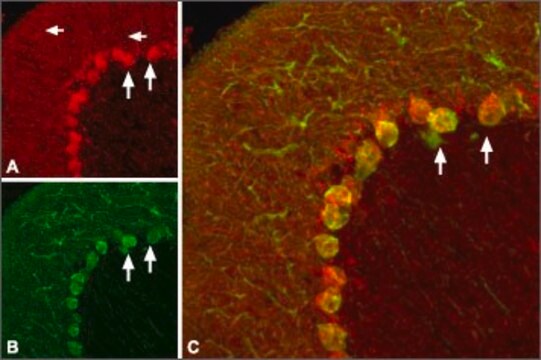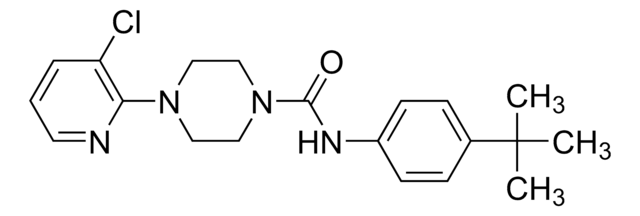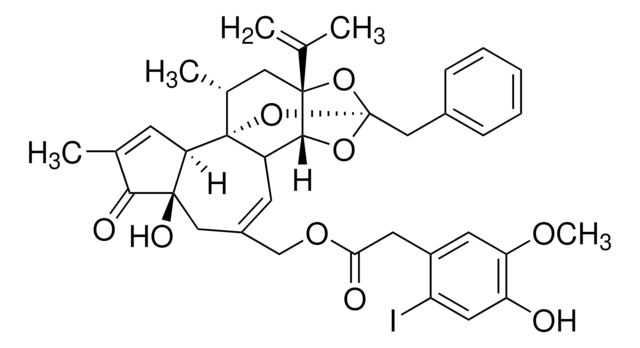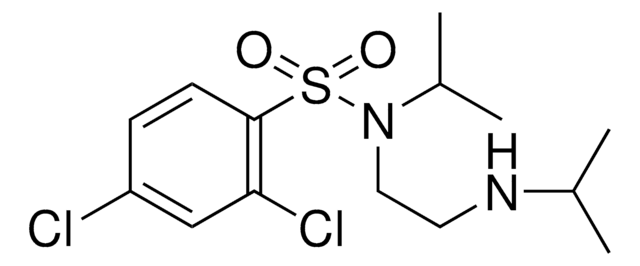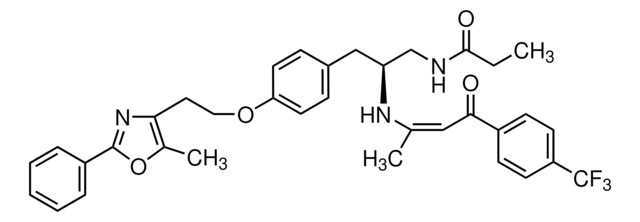C191
Capsazepine
≥98% (HPLC), solid, TRPV1 antagonist
Sinónimos:
N-[2-(4-Chlorophenyl)ethyl]-1,3,4,5-tetrahydro-7,8-dihydroxy-2H-2-benzazepine-2-carbothioamide
About This Item
Productos recomendados
product name
Capsazepine, ≥98% (HPLC), solid
Nivel de calidad
Análisis
≥98% (HPLC)
formulario
solid
color
off-white
solubilidad
DMSO: >10 mg/mL, clear
temp. de almacenamiento
2-8°C
cadena SMILES
Oc1cc2CCCN(Cc2cc1O)C(=S)NCCc3ccc(Cl)cc3
InChI
1S/C19H21ClN2O2S/c20-16-5-3-13(4-6-16)7-8-21-19(25)22-9-1-2-14-10-17(23)18(24)11-15(14)12-22/h3-6,10-11,23-24H,1-2,7-9,12H2,(H,21,25)
Clave InChI
DRCMAZOSEIMCHM-UHFFFAOYSA-N
Información sobre el gen
human ... TRPV1(7442) , TRPV4(59341)
rat ... Trpv1(83810)
¿Está buscando productos similares? Visita Guía de comparación de productos
Aplicación
- to study its effect on capsaicin induced extracellular signal-regulated kinase (ERK) phosphorylation
- to study the role of TRPV1 in central terminals on nociception in rats
- for functional characterization of the TRPV1 in bull spermatozoa
Acciones bioquímicas o fisiológicas
Código de clase de almacenamiento
11 - Combustible Solids
Clase de riesgo para el agua (WGK)
WGK 3
Punto de inflamabilidad (°F)
Not applicable
Punto de inflamabilidad (°C)
Not applicable
Equipo de protección personal
Eyeshields, Gloves, type N95 (US)
Certificados de análisis (COA)
Busque Certificados de análisis (COA) introduciendo el número de lote del producto. Los números de lote se encuentran en la etiqueta del producto después de las palabras «Lot» o «Batch»
¿Ya tiene este producto?
Encuentre la documentación para los productos que ha comprado recientemente en la Biblioteca de documentos.
Los clientes también vieron
Nuestro equipo de científicos tiene experiencia en todas las áreas de investigación: Ciencias de la vida, Ciencia de los materiales, Síntesis química, Cromatografía, Analítica y muchas otras.
Póngase en contacto con el Servicio técnico

